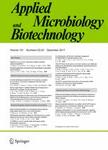版权所有:内蒙古大学图书馆 技术提供:维普资讯• 智图
内蒙古自治区呼和浩特市赛罕区大学西街235号 邮编: 010021

作者机构:China Med Univ Sch Stomatol Dept Periodont 117 Nanjing North St Shenyang 110002 Liaoning Peoples R China China Med Univ Sch Stomatol Dept Oral Biol 117 Nanjing North St Shenyang 110002 Liaoning Peoples R China
出 版 物:《APPLIED MICROBIOLOGY AND BIOTECHNOLOGY》 (应用微生物学与生物技术)
年 卷 期:2019年第103卷第3期
页 面:1393-1404页
核心收录:
学科分类:0710[理学-生物学] 1007[医学-药学(可授医学、理学学位)] 100705[医学-微生物与生化药学] 07[理学] 0836[工学-生物工程] 071005[理学-微生物学] 10[医学]
基 金:National Natural Science Foundation of China [81470745 81670997]
主 题:P gingivalis F nucleatum OSCC Periodontal pathogen Differentiation Metastasis
摘 要:Mounting evidence suggests a causal relationship between specific bacterial infections or microbial compositions and the development of certain malignant neoplasms. In this study, we performed research through 16S rRNA amplicon sequencing, qPCR and fluorescence in situ hybridization to certify the relationship between periodontal pathogens and oral squamous cell carcinoma (OSCC). Subgingival plaque, cancer and paracancerous tissues from 6 patients with OSCC were selected for mapping bacterial profiles by 16S rRNA amplicon sequencing. The research showed that periodontal pathogens were enriched in cancer and paracancerous tissues, while the bacterial profiles were similar between the cancer tissues and subgingival plaque. Furthermore, the relative abundance of Porphyromonas gingivalis, Fusobacterium nucleatum and Streptococcus sanguinis was detected in 61 cancer tissues, paracancerous tissues and subgingival plaque samples and in 30 normal tissues by qPCR. The results revealed that P. gingivalis and F. nucleatum existed at higher levels in cancer tissue than in normal tissues and were correlated with subgingival plaques. P. gingivalis was detected using a special oligonucleotide probe in 60.7% of OSCC tissues, 32.8% of paracancerous tissues and 13.3% of normal tissues. Relevance analysis showed that P. gingivalis infection was positively associated with late clinical staging, low differentiation and lymph node metastasis in patients with OSCC, which was accompanied by deeper periodontal pockets, severe clinical attachment loss and loss of teeth. This study revealed that there might be a close relationship between oral microorganisms, particularly periodontal pathogens, and OSCC, which might enrich the pathogenesis of oral squamous carcinoma.